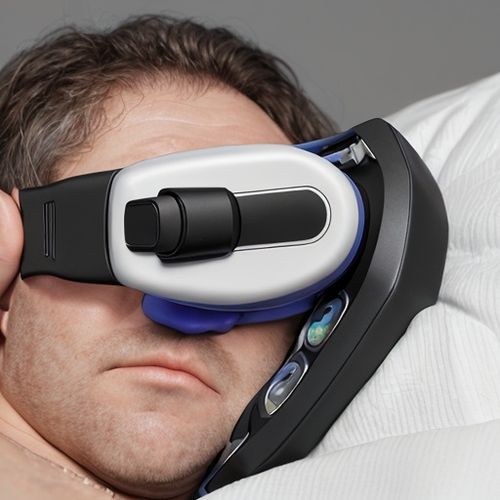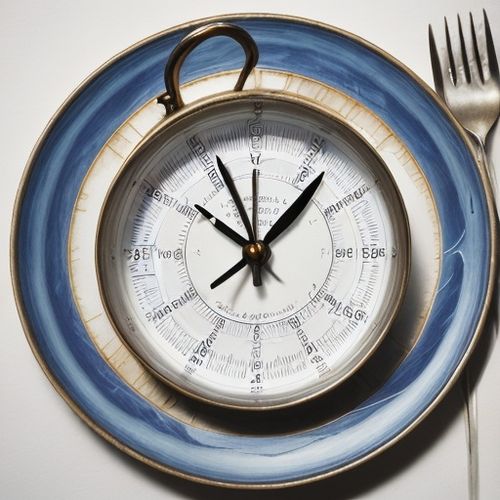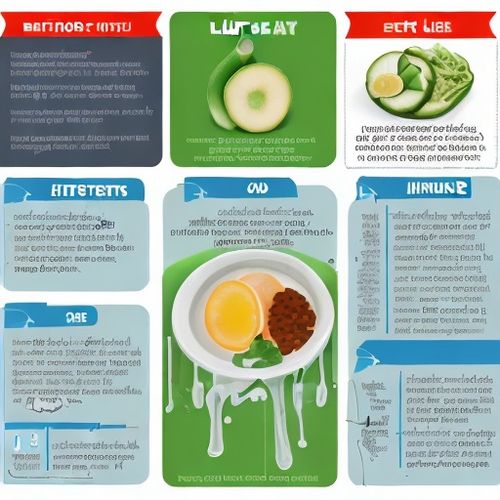In the quest for better health and weight loss, few practices have garnered as much attention as fasting. Once primarily a cultural or religious practice, fasting has now become a trendy "bio-hacking" technique endorsed by celebrities and CEOs alike. A-listers such as Jennifer Lopez, Reese Witherspoon, and Heidi Klum swear by intermittent fasting, while Jennifer Aniston's 16-hour daily fast and Hugh Jackman's use of the same method to sculpt his Wolverine physique have brought it into the spotlight. With adult obesity rates more than doubling and adolescent obesity quadrupling since 1990, it's no wonder that intermittent fasting—one of the most searched-for weight-loss techniques online—has become so popular.
But with so many fasting methods available, how do you choose the best one for you? Let's delve into the science and practicality behind some of the most popular fasting regimes.
The 12-Hour Fast: A Natural Rhythm
For many busy individuals, particularly parents, a 12-hour fast might already be part of their daily routine. Eating between 7 a.m. and 7 p.m., for example, allows for a natural break from food overnight. "Most people could achieve that," says Dr. Alasdair Scott, a general practitioner and medic for the Selph health app. "It stops you eating late at night, which will probably help you get a good night’s sleep and improve your glucose control while you’re asleep, which can have benefits for weight loss. It’s very doable."
However, for women, extending the fast beyond 12 hours can have unintended consequences. Lauren Johnson Reynolds, a qualified nutritional therapist known as the London Wellness Coach, warns that fasting for more than 12 hours can raise cortisol levels, the stress hormone, and worsen hormonal symptoms such as sore breasts, fibroids, mood swings, and painful periods. "In the case of PMS [premenstrual syndrome], fasting can cause low blood sugar, which can actually worsen mood swings and make us anxious," she says. "Fasting in these circumstances can trigger disordered eating for women."
Expert Tip: For those who do fast for 12 hours, Reynolds recommends eating breakfast within 90 minutes of waking. "A balanced protein and fiber-rich meal is best, allowing you to get the benefits without the harshness of a long fast," she advises.
The 16/8 Method: A Popular Choice
The 16/8 method, where individuals fast for 16 hours and eat within an 8-hour window, has become a favorite among those with busy schedules. One such example is Kath Brown, a colleague who lost 21 pounds in just over a year by having her last meal at 7:30 p.m. and not eating again until lunch the next day. "The key to success is having a hearty, nutritious lunch to look forward to," she says. "I eat whatever I fancy for both lunch and dinner and try to avoid sugar and snacking. It’s a very simple way to approach a healthy diet."
Registered nutritionist Jenna Hope emphasizes the importance of balanced meals during the eating window. "This person will want to make sure they’re eating enough food within that time frame, but they’re not overeating," she says. "What can happen is if their blood-sugar levels fall really low, they’re likely to crave sugar and they might find their first meal is a bit of a binge."
A review in the Food Science & Nutrition journal found that the 16/8 method can help with weight control and metabolism. In one study, 86% of participants achieved their weight loss goals during a 3-month period.
Expert Tip: Hope recommends that those following the 16/8 method ensure their meals are well-balanced with a variety of nutrients. "You’ll need complex carbohydrates like sweet potatoes, beans, pulses, and quinoa," she advises. "Make sure there’s lots of different types of vegetables; peppers, aubergines, and courgettes. Finally, plenty of protein—both fish and meat—because you need to keep your omega-3 levels up, too." Staying hydrated is also crucial to feeling full and maintaining overall health.
The 24-Hour Fast: A More Radical Approach
The 24-hour fast, often referred to as the OMAD (One Meal A Day) diet, is popular among celebrities like Bruce Springsteen and Chris Martin. Advocates of this method eat a single meal at 4 p.m. and fill the hungry hours in between with tea (strictly no milk or sugar) and black coffee. While it can lead to significant weight loss and minimal belly fat, most experts warn that it is not sustainable, especially for those who engage in regular strength training.
However, a 2022 study in the Frontiers in Physiology journal found that eating a single meal a day in the evening can lower body weight and improve metabolic health. Another study showed that eating once a day could reduce inflammation associated with chronic illnesses like Alzheimer’s and Parkinson’s.
Expert Tip: Dr. Scott advises against attempting a 24-hour fast without strict medical supervision. "If you are going to do it, I wouldn’t say you should do it more than once every couple of weeks," he says. "You should also build up to it slowly; if you try to do a 24-hour fast and you’ve never fasted before, it’s a recipe for headaches, hunger pangs, and irritability."
The 36-Hour Fast: A Cautionary Tale
Fasting for 36 hours is not recommended by most experts. "Spending 36 hours avoiding food in order ‘to be able to’ eat unhealthy food at other times in the week is not a healthy approach," says Hope. The risk is that individuals might feel licensed to indulge in unhealthy foods after the fast, potentially consuming more calories than they would have otherwise.
However, Steve Hendricks, author of *The Oldest Cure in the World: Adventures in the Art and Science of Fasting*, argues that extended fasting can trigger cellular repairs that slow aging and even reverse diseases like diabetes and hypertension. He also believes fasting can protect patients from the worst of chemotherapy’s side effects.
Expert Tip: Hope recommends that those considering a 36-hour fast proceed with caution and consult their doctors. Hydration is crucial during any fast. "You have to make sure with any fast that you’re drinking plenty of water," she says. "That will help you feel fuller, but also remember that you’d ordinarily get water from the food you’re eating, so you’ll have to drink more than you normally would."
Does Fasting Work?
Arguably, any period without eating could be considered a fast, but its impact on the body is what truly matters. "During fasting, your body switches from using glucose [energy from food] to burning fat for energy, which takes about 12 to 14 hours," explains Mark Mattson, adjunct professor of neuroscience at the Johns Hopkins School of Medicine and author of *The Intermittent Fasting Revolution*. Therefore, a minimum of 12 hours is roughly enough to constitute a fast.
Beyond that, the actual time restriction may not make a significant difference in weight loss. "We don’t have any evidence at the moment that the actual time restriction you’re doing makes any difference beyond the amount of calories you’re able to fit in during that time," says Dr. Scott. "If you’re eating the same 1,800 kilocalories, we don’t have any evidence to say that cramming it all in within a two-hour window and fasting the other 22 hours will help you lose weight any faster than if you eat it within an eight-hour window and fast the other 16."
Finding the Right Balance
Fasting can be a powerful tool for weight loss and improved health, but it's essential to choose a method that fits your lifestyle and health needs. The 12-hour fast is accessible and sustainable for most people, while the 16/8 method offers a slightly more intensive approach that can yield significant results. The 24-hour and 36-hour fasts, however, require careful consideration and medical supervision due to their potential risks and challenges.
Ultimately, the key to successful fasting lies in balance and consistency. Whether you choose a shorter or longer fast, ensuring that your meals are nutrient-dense and well-balanced is crucial. Staying hydrated and listening to your body's signals are also vital components of a healthy fasting regimen. As with any health practice, consulting with a healthcare professional before embarking on a fasting journey can help you make informed decisions and achieve your goals safely and effectively.

By Sarah Davis/May 19, 2025

By Natalie Campbell/May 19, 2025

By George Bailey/May 19, 2025

By Lily Simpson/May 19, 2025

By David Anderson/May 19, 2025

By Olivia Reed/May 19, 2025

By Amanda Phillips/May 19, 2025

By Sophia Lewis/May 19, 2025

By Olivia Reed/May 19, 2025

By Emily Johnson/May 19, 2025

By John Smith/May 18, 2025

By Eric Ward/May 18, 2025

By Jessica Lee/May 18, 2025

By Jessica Lee/May 18, 2025

By Sophia Lewis/May 18, 2025

By Rebecca Stewart/May 18, 2025

By Emily Johnson/May 18, 2025

By Rebecca Stewart/May 18, 2025

By Megan Clark/May 18, 2025

By Megan Clark/May 18, 2025